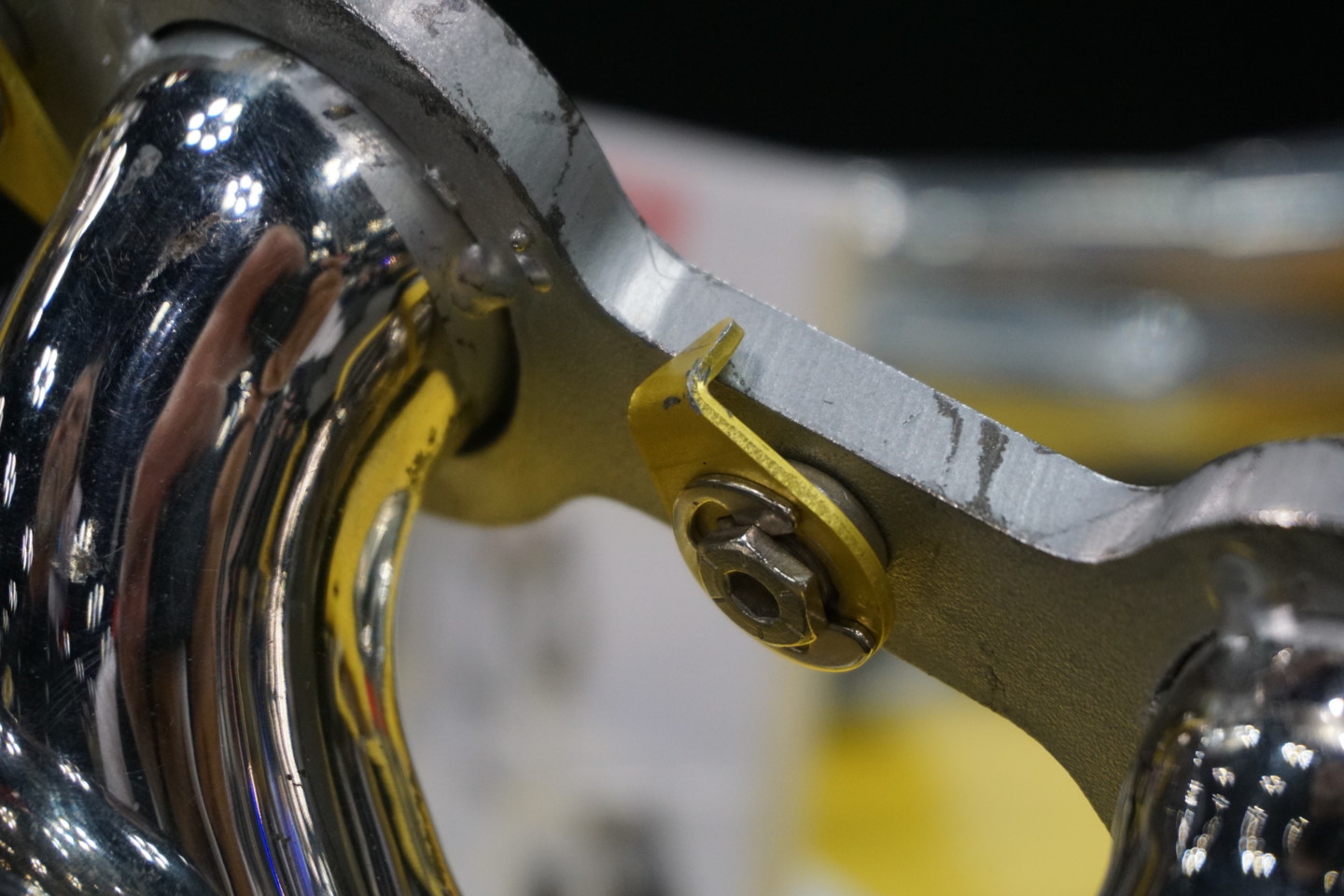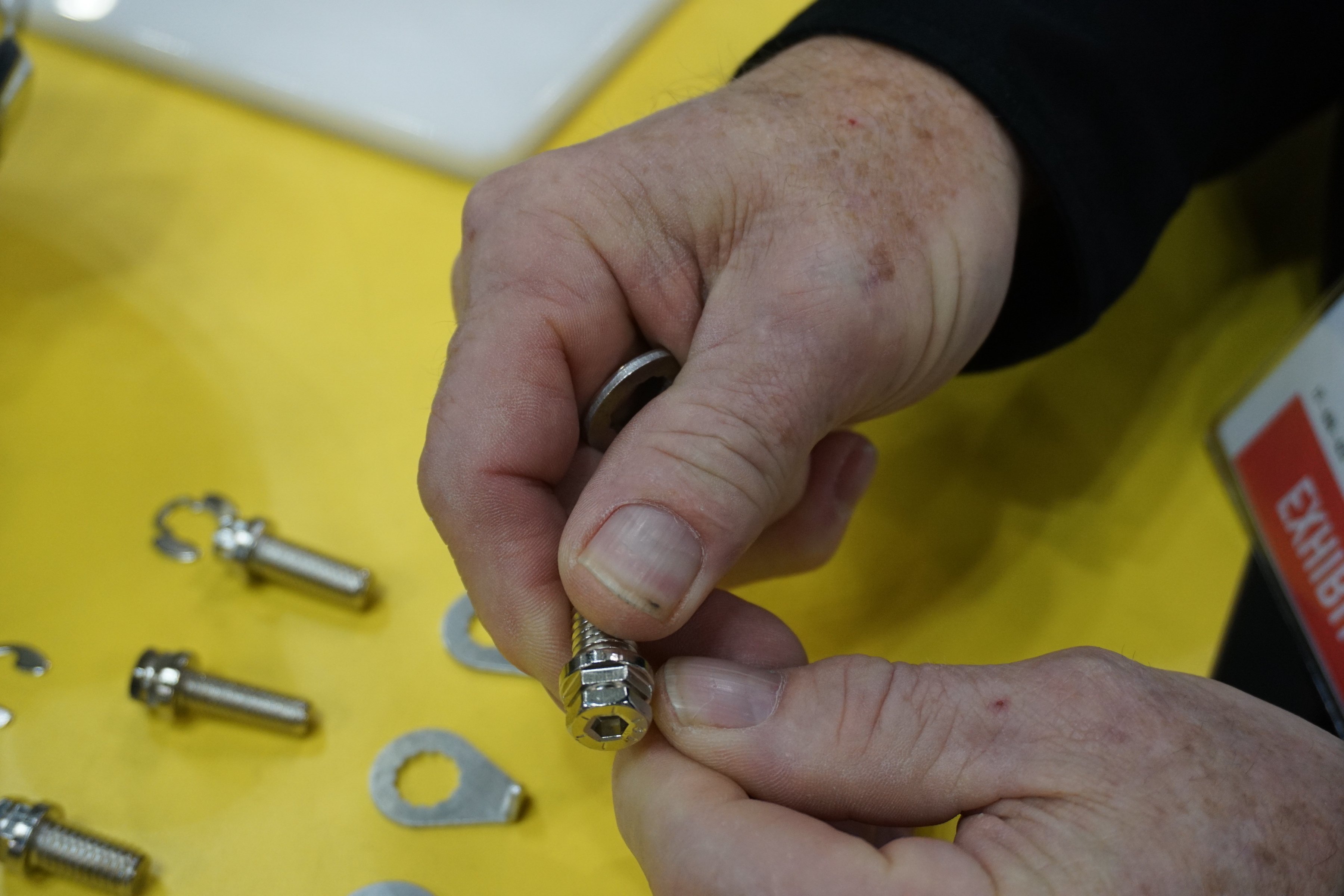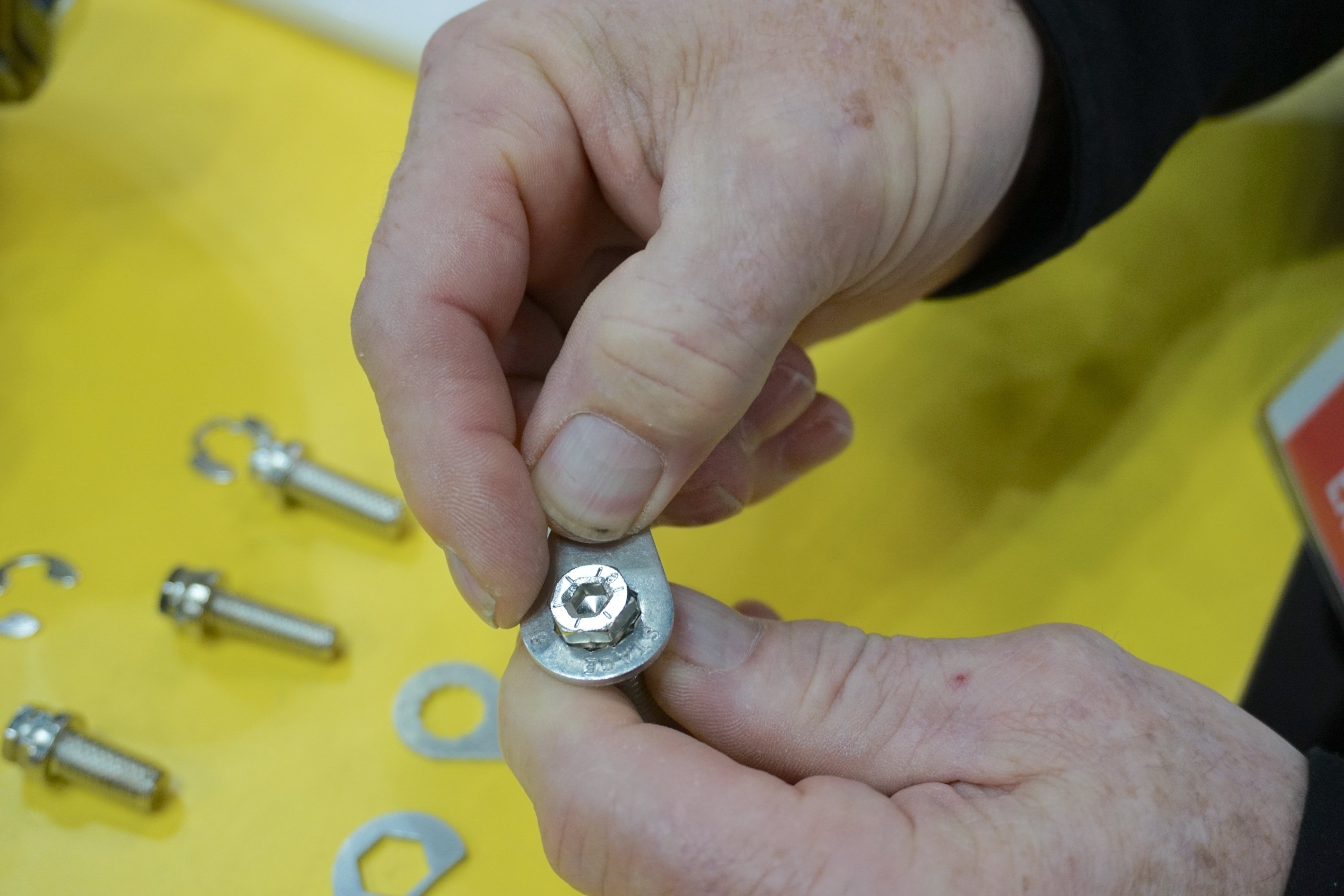Fighting Murphys' Law and Winning
https://www.dragzine.com/tech-stories/stage-8-locking-fasteners-fighting-murphys-law-and-winning/
BY BOBBY KIMBROUGH - DECEMBER 18, 2020
When it comes to Murphy’s law, automotive enthusiasts always lose – except when you have a secret weapon.
Stage 8 Fasteners locks up Murphy's Law and wins.
Today we are going to talk about beating Murphy’s Law [Cue up background music: I fought the law].
When it comes to Murphy’s law, automotive enthusiasts always lose – except when you have a secret weapon. When it comes to bolts vibrating loose and causing all kinds of shenanigans, from exhaust leaks to drivetrain failures, Stage 8 Fasteners locks up Murphy. This time, the law loses.

Stage 8 bolts look like regular hardware except for the unique groove in the bolt head where the C-clip fits.
It’s no secret that bolts come loose in the engine compartment. We’re always wondering why seven of the eight bolts are tight, but that one bolt seemed to magically loosen up even though we know that we torqued them all down equally. This situation calls for something to lock the bolt or nut in place. We’ve become attached to Stage 8 Locking Fasteners as a solution to lost clamping force.
We talked to Bruce Bennett, founder and CEO of Stage 8 Locking Fasteners to get a complete understanding of these incredible devices.
Why Bennett Invented Stage 8 Fasteners
Bennett, a lifelong Harley fan, was working on his beloved Shovelhead when faced with a problem. Like most Harley riders, he replaced an exhaust pipe (loud pipes save lives) but the exhaust pipe fell off the first day. Bennett looked at the fastener that retained the pipe and realized there was nothing preventing it from working loose again—and again.
While he loved to do maintenance, reinstalling this exhaust pipe regularly was not something he looked forward to. So, he looked to solve the problem. Not like welding it together permanently, but like making sure the bolt didn’t vibrate loose. He came up with a device that would make a bolt that wouldn’t work loose, even under extremes of temperature and vibration.
What Happens
“Basically, there are three things that cause header bolts to come loose. Vibration is number one,” said Bennett. “Then you have movement of the engine back and forth. Finally, there are thermal changes that happen. All three of these working together will only do one thing, cause a bolt to come loose.” He assured us that vibration would never tighten a bolt, only loosen a bolt or nut.
Like many enthusiasts, we thought thermal changes would be a major cause of bolts loosening. “It’s not as big a deal as people think it is,” Bennett explained. “The problem comes in when the expansion of the threads is hit with vibration. The bolt only has one way to go. We’ve tested this by heating up bolts to 400 or 500 degrees. They only gain about three-thousandths of an inch in length.”

How Much Is Tight Enough?
If loosening bolts or nuts is a problem, it would stand to reason that simply applying more torque would be the answer. That’s not the answer according to Bennett. “You just want to seat the gasket. Anywhere between 25 and 35 foot-pounds of torque will do.”
The problem happens when the bolt or nut begins to vibrate loose. Soon enough, you have a gasket leak. “Once you have a gasket leak, you can tighten it up one or two times but that won’t solve the problem,” said Bennett. “Pressure is going to get out. The whole trick is to not let them come loose. That is the gasket killer.”

Many times we hear terms like “dissimilar metal” that murky up the reasoning. Bennett prefers to deal strictly with the facts. “A torque wrench measures the spec that determines the clamp load. Once you remove the torque wrench, the clamp load stays there,” says Bennett. “Even if you have dissimilar metals, the clamp load is still there. There is little difference between cast iron and aluminum heads as far as torque load. 25 to 35 foot-pounds is more than adequate. Locking fasteners will help by keeping the bolt’s position where you left it.”
What Makes Stage 8 Locking Fasteners Different?
There are several other forms of fastener locking devices, from thread locking compounds, lock wire, and even cotter pins. We wanted to know what makes the Stage 8 Locking Fasteners different. “It’s proprietary because we lock from the head of the bolt,” explained Bennett. “It is not a thread-locker or dependent on clamp load or anything like that. We can lock a bolt with as little as five pounds of torque and it would still stay tight.”
Stage 8 bolts install like typical hardware, but they have a unique groove on the head of the bolt. With the bolt torqued to specification, a locking retainer is slipped over the head of the bolt and an external E-clip is snapped into the groove. The retainer rests against any fixed part of the engine to keep the bolt from turning.
The Stage 8 Locking Fastener uses a retainer over the top of the bolt. This acts as a permanent wrench on the bolt head. The C-clip keeps the retainer in place and ensures the bolt will not counter-rotate.
“We put that retainer over the top of the bolt which acts like leaving a wrench on the bolt all the time. The clip keeps the retainer in place and it will not counter-rotate,” Bennett said, adding; “It doesn’t require any special tools to remove once in place. A screwdriver will free the C-clip and the bolt can be removed with a common wrench or socket.”
“Gasket size, flange size, type of material, none of that matters. Our bolts will lock it, no matter what. You can tighten it down to whatever spec is called for by the gasket manufacturer, lock the retainer on the bolt head and that is it.”
Header Bolts And More
Like many people, we favored Stage 8 Locking Fasteners because of their ability to solve the header bolt problem. However, Stage 8 Fasteners is not a one-trick pony. This article focuses on their highly-successful locking header bolts, but the company offers solutions for many other fastener problems.

Stage 8 offers locking fastener kits for other problem areas, like rearend ring gear bolts.
Needless to say, Stage 8 fasteners still work well on Harley-Davidson’s big twin cruisers and there is a line of metric bolts in their import section that will work on metric cruisers as well. High vibration areas in automobiles, like harmonic balancers, exhaust collectors, intakes, flywheel, and oil pans have been addressed with Stage 8 kits. Even ultra-high-frequency vibrations at the driveshaft flanges or rearends can find help with locking fasteners.
These days, Stage 8 Locking Fasteners are a household name and very well known in the automotive industry. Stage 8 fasteners include performance, off-road, industrial, railroad, and military applications. For more information on the many different fastener kits offered by the company, visit them online at www.stage8.com.








